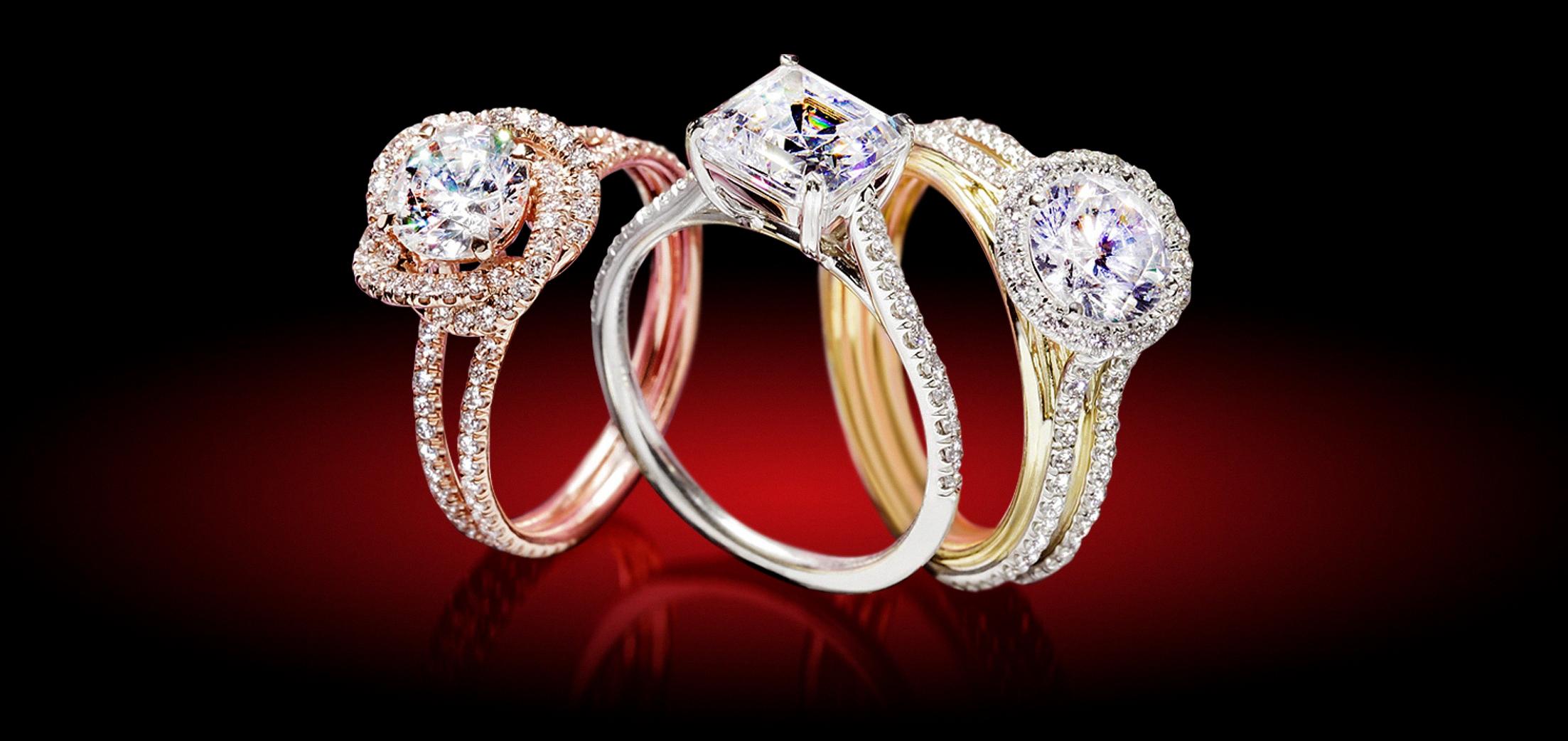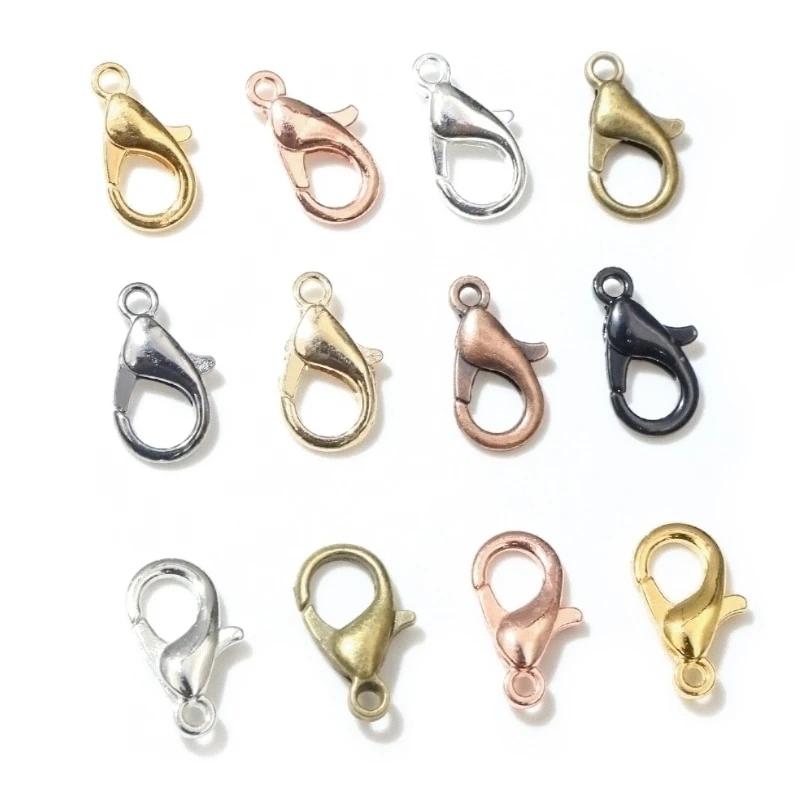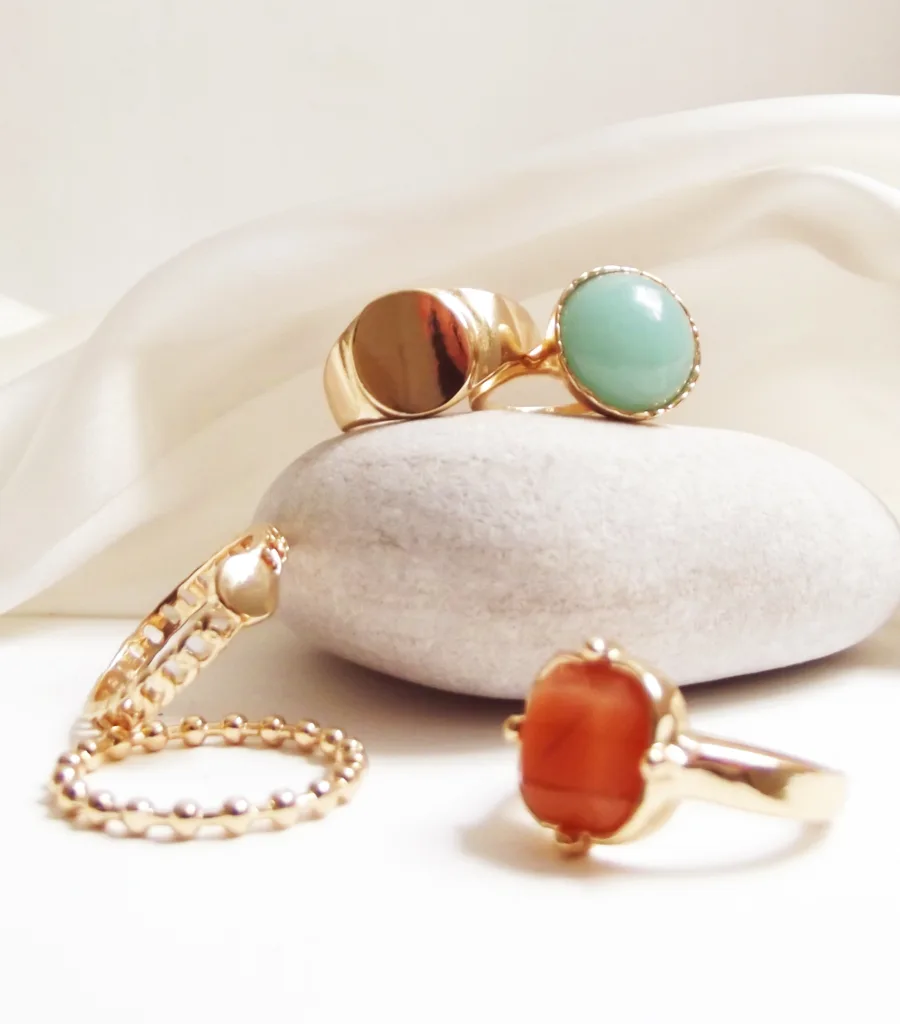If you’re a jewelry lover, you’ve probably heard about alloys. Whether you’re purchasing a gold ring or a silver necklace, many jewelry pieces are made from alloys. But what exactly are alloys, and do they tarnish?
An alloy is a mixture of different metals that are combined to create a new material that has improved properties compared to the individual metals. For example, pure gold is a soft metal that is not very durable, so jewelers add other metals like copper or silver to create a stronger and more durable gold alloy.
While alloys offer many benefits, they can still tarnish over time. Tarnishing occurs when the metal reacts with substances in the air, like oxygen and sulfur, which create a layer of corrosion on the surface of the metal. This layer can cause discoloration, dullness, and even damage to the alloy.
So, which alloys are more prone to tarnishing? It depends on the specific metals used in the alloy. For example, sterling silver is an alloy that contains 92.5% silver and 7.5% other metals, usually copper. Sterling silver is known to tarnish over time, creating a dark or yellowish discoloration on the jewelry piece.
Gold alloys, on the other hand, are less prone to tarnishing. However, gold alloys can still discolor over time depending on the other metals used in the mixture. Vermeil, which is a gold-plated alloy that contains a layer of gold over a base metal like sterling silver, can also tarnish over time.
Aluminum alloys, which are often used in costume jewelry, contain very little iron and do not rust. However, they can still oxidize and experience corrosion over time, leading to discoloration and damage to the jewelry piece.
So, what can you do to prevent tarnishing in your alloy jewelry? Here are a few tips:
– Store your jewelry in a dry, cool place to prevent exposure to air and moisture.
– Avoid wearing your jewelry in water or while exercising to prevent sweat and moisture from building up on the surface of the metal.
– Clean your jewelry regularly with a soft cloth or specialized jewelry cleaner to remove dirt and oils that can contribute to tarnishing.
While alloys offer many benefits, they can still tarnish over time. By following these tips and beng mindful of the specific metals used in your jewelry pieces, you can help prevent tarnishing and keep your jewelry looking beautiful for years to come.
Does Alloy Tarnish Easily?
Alloys can potentially tarnish over time, but it depends on the specific type of alloy. Gold alloys, for example, may tarnish if they contain other metals like copper, zinc, silver, and nickel. These metals can react with oxygen and moisture in the air, causing discoloration on the jewelry or on the skin of the wearer. However, some alloys are specifically formulated to resist tarnishing, such as stainless steel and titanium. In general, how quickly an alloy tarnishes also depends on factors like the frequency of wear, exposure to moisture and chemicals, and the quality of the alloy itself.

Source: whiteflash.com
The Benefits of Alloy Jewelry
Yes, an alloy is good for jewelry. Jewelry made of pure metals like gold or silver can be too soft and prone to damage, scratches, or bending, esecially when worn daily. Hence, alloys are created by mixing two or more metals to create a stronger and more durable material. The resulting alloy is usually harder, more scratch-resistant, and better suited for everyday wear. For example, sterling silver is an alloy made of 92.5% silver and 7.5% copper, which gives it strength and durability while still maintaining its beauty and luster. Similarly, gold alloys are created by mixing gold with other metals like copper, silver, or zinc to make it more durable and affordable. In summary, using alloys for jewelry is a practical solution to ensure longevity and durability without sacrificing the aesthetic appeal of the piece.
Does Alloy Tarnish When Exposed to Water?
Alloys, including aluminum alloys, can tarnish in water, but the level of tarnishing will vary depending on the specific alloy composition. In the case of aluminum alloys, they contain minimal amounts of iron, which means they will not rust in water. However, they will oxidize, causing an oxide film to quickly form on the surface of the alloy. This oxide layer is hard and resistant to further corrosion, which helps to protect the underlying metal from further damage. Therefore, wile aluminum alloys may tarnish in water, the formation of the oxide layer provides a protective barrier that helps to prevent extensive damage to the metal.
The Tarnish Resistance of Alloys
Alloys are typically composed of two or more metals, with the aim of improving their properties such as strength, durability, and resistance to corrosion. While some alloys may offer better resistance to tarnish than others, no alloy is completely tarnish-resistant.
Tarnish is a natural process whereby a metal surface reacts with oxygen and sulfur-containing compounds in the air and gradually darkens over time. Even alloys that are marketed as tarnish-resistant, such as Argentium silver or surgical stainless steel, are still susceptible to tarnishing if not properly cared for.
That being said, some alloys may offer better resistance to tarnish than others. For example, sterling silver is an alloy composed of 92.5% silver and 7.5% copper, which helps to improve its hardness and durability. However, it still requires regular cleaning and maintenance to prevent tarnish from forming.
In summary, while some alloys may offer better resistance to tarnish than others, no alloy is completely tarnish-proof. Regular cleaning and maintenance are necesary to keep metal surfaces looking their best.
The Lifespan of Alloy
Alloys are knwn for their stylish appearance, improved performance, and increased fuel efficiency. However, they have a lower lifespan when compared to steel wheels. On average, alloys typically last for 3-4 years, which is relatively shorter than steel wheels. The lifespan of alloys can vary depending on several factors, such as the quality of the alloy, the driving conditions, and the maintenance and care given to the wheels. Regular cleaning and proper maintenance can help extend the lifespan of alloys. It’s also important to note that some alloys may last longer than 4 years, while others may not even last up to 3 years, depending on the aforementioned factors.

Source: amazon.com
Comparing the Benefits of Alloy and Sterling Silver
Alloy and sterling silver are two different materials with their own unique properties and advantages. Alloy refers to a mixture of different metals, while sterling silver is an alloy that consists primarily of silver, with the addition of copper or other metals.
When it comes to durability, sterling silver is generally considered to be a better choice than alloy. This is beause the addition of copper or other metals in sterling silver makes it harder and more resistant to scratches and damage than pure silver or other alloys.
Additionally, sterling silver is often preferred over alloy for jewelry making due to its high quality and lustrous shine. It is also hypoallergenic, making it a great choice for those with sensitive skin.
Overall, while alloy may have its own advantages, such as being more affordable or having different aesthetic qualities, when it comes to durability and quality, sterling silver is often considered the better choice.
The Benefits of Alloy vs. Stainless Steel
The answer to whether alloy steel is better than stainless steel depends on the specific application and requirements. Alloy steel is known for its high strength, toughness, and wear resistance, making it a popular choice in industries such as aerospace, automotive, and oil and gas. It also has good weldability and machinability, and is typically less expensive than stainless steel. On the other hand, stainless steel is highly corrosion-resistant, making it ideal for applications where hygiene and cleanliness are critical, such as in the food and medical industries. Stainless steel is also known for its aesthetic appeal and is often used in architectural and decorative applications. It is important to consier the specific needs of each application when choosing between alloy and stainless steel to ensure the best performance and cost-effectiveness.
Showering with Alloy Jewelry
Alloy jewelry is typically made by combining two or more metals, often including copper, nickel, and zinc. While these metals are generally durable and resistant to tarnishing, it is still not advisable to shower while wearing alloy jewelry. This is because exposure to water and chemicals in soaps, shampoos, and other personal care products can cause the metal to corrode or discolor over time. Additionally, prolonged exposure to moisture can weaken any adhesives or coatings that may have been used to enhance the appearance or durability of the jewelry. To keep your alloy jewelry in good condition, it is recommended that you remove it before showering, swimming, or engaging in any other activities that cold expose it to excessive moisture or chemicals.
Is Alloy More Durable Than Gold Plated Jewelry?
Yes, alloy is generally considered better than gold plated. This is beause the layer of gold alloy on gold-filled jewelry is significantly thicker than the layer of gold on gold plated jewelry. Gold-filled jewelry typically has 100 times more gold alloy than gold plated jewelry. This thicker layer of gold alloy means that gold-filled jewelry is more durable and longer-lasting than gold plated jewelry. Additionally, gold-filled jewelry can stand up to wear and tear better than gold plated jewelry. Overall, while gold plated jewelry may be more affordable, gold-filled jewelry is a better investment due to its increased durability and longevity.

Source: aliexpress.com
Rate of Tarnishing of Alloy
The speed at whih an alloy tarnishes can vary greatly depending on a few different factors. One of the most important factors is the metal content of the alloy itself. For example, alloys that contain a higher percentage of zinc may tarnish more quickly than alloys that contain a lower percentage of zinc.
Another factor that can affect the speed at which an alloy tarnishes is the finish that is applied to the surface of the metal. If the finish is not properly applied, or if it is exposed to certain conditions such as humidity or high temperatures, it may be more susceptible to tarnishing and discoloration.
Finally, the amount of exposure that the alloy has to certain environmental factors such as air, water, and sunlight can also impact the speed at which it tarnishes. For example, an alloy that is exposed to air and moisture on a regular basis may tarnish more quickly than one that is kept in a dry, controlled environment.
Overall, the speed at which an alloy tarnishes can vary greatly depending on a number of different factors, and it is important to take these factors into consideration when choosing an alloy for a particular application.
Preventing Tarnishing of Alloys
Alloys, like any other metal, can tarnish over time due to exposure to air, moisture, and other environmental factors. However, there are several ways to prevent or slow down the tarnishing process of alloys:
1. Keep it dry: Moisture is one of the main culprits in causing tarnish, so it’s essential to keep your alloys as dry as possible. Avoid wearing your alloys while swimming, showering, or doing any activities that will expose them to water. After wearing, make sure to dry them thoroughly before storing them.
2. Store it properly: Proper storage is crucial in preventing tarnish. Store your alloys in a cool, dry place, away from sunlight, air, and moisture. You can also store them in airtight bags or containers with anti-tarnish strips or silica gel packets to absorb any moisture.
3. Clean it regularly: Regular cleaning is vital in maintaining the shine and luster of your alloys. Use a soft cloth or a non-abrasive cleaner to remove any dirt or grime that may have accumulated on the surface. Avoid using harsh chemicals or abrasive cleaners that can scratch or damage the alloys.
4. Use a protective coating: You can also apply a protective coating or lacquer to your alloys to prevent tarnishing. This coating forms a barrier between the metal and the environment, reducing the risk of tarnish. However, be sure to follow the manufacturer’s instructions when applying the coating.
By following tese tips, you can help prolong the lifespan of your alloys and prevent them from tarnishing quickly.
Does Alloy Rust?
Alloys can turn rusty, but it depends on the metals that make up the alloy. Rust is caused by the presence of iron in a metal, whih reacts with oxygen and water to form iron oxide or rust. If an alloy is made with ferrous metals, such as iron or steel, it will be susceptible to rusting. However, if the alloy is made with non-ferrous metals, such as copper, aluminum, or titanium, it will be less likely to rust. Additionally, some alloys are made with a protective layer or coating to prevent rust from forming. Therefore, whether or not an alloy turns rusty depends on the specific composition of the alloy and the environmental conditions it is exposed to.
Metals That Will Never Tarnish
Platinum is a metal that will never tarnish. It is a naturally white metal that does not require any plating or coatings to maintain its color. Unlike other metals, such as silver or copper, platinum is a non-reactive metal that does not corrode or tarnish over time. It is also extremely durable and scratch-resistant, making it an ideal choice for jewelry that will be worn daily. Additionally, platinum is hypoallergenic, making it a great option for those with sensitive skin. While platinum may be a more expensive metal choice, its longevity and durability make it a worthwhile investment for anyone looking for a piece of jewelry that will last a lifetime.
Does Alloy Discoloration Occur?
Yes, alloys can turn black due to corrosion or oxidation. The degree and speed of discoloration depend on the composition of the alloy and the environmental conditions. For example, alloys containing copper or silver can develop a dark patina when exposed to air and moisture. This is because copper and silver react with oxygen and sulfur in the air to form copper oxide and silver sulfide, respectively. These compounds are black or brown and can coat the surface of the alloy, making it appar darker. However, not all alloys will turn black, and some may even resist tarnishing due to the presence of other elements or protective coatings.
Avoiding Certain Metals When Choosing Jewelry
If you are a jewelry wearer with metal sensitivity, it is advisable to avoid metals that commonly cause allergic reactions. The most common metal allergen is nickel, so you should avoid jewelry made with nickel or nickel alloy. This includes nickel silver, which is an alloy of nickel, zinc, and copper. Other metals to avoid include cobalt, chromium, and certain types of gold alloys that contain nickel or other allergenic metals. It is recommended to opt for jewelry made with hypoallergenic metals such as surgical grade stainless steel, titanium, or high-quality gold that is free of allergenic metals.

Conclusion
In conclusion, alloys can tarnish over time, depending on the other metals used in their composition. Gold alloys, vermeil, and gold plated jewelry can begin to tarnish during normal use, while aluminum alloys contain almost no iron and are resistant to rust. However, they still experience corrosion and oxidation. It is important to note that there is no tarnish-proof alloy available, and even sterling silver, which is commonly used in jewelry, can tarnish over time. Therefore, proper care and maintenance of your alloy jewelry is crucial to ensure its longevity and prevent tarnishing.
